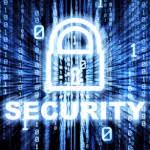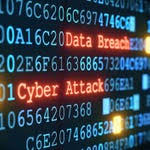The Quantum Leap in Cybersecurity How Superposition Changes the Game.
Cybersecurity, in its perpetual game of cat and mouse, is on the cusp of a radical transformation. The rise of quantum computing, and specifically the principles of quantum mechanics like superposition, is poised to redefine the landscape of data protection. Understanding this fascinating intersection is no longer optional; it’s crucial for organizations and individuals navigating the future of digital security.
This article dives into the potential impact of quantum mechanics on cybersecurity, focusing on the intriguing concept of superposition and its implications for traditional encryption methods. We’ll explore the fundamental differences between classical and quantum bits and how these differences can revolutionize our approach to securing information. Finally, we’ll discuss the proactive measures being taken to develop quantum-resistant algorithms, ensuring a more secure digital future.
Superposition: A New Way to Think About Information
At the heart of classical computing lies the bit, representing information as either a 0 or a 1. Quantum computing, however, leverages qubits (quantum bits) which exploit the principles of quantum mechanics. One of the most important of these is superposition.
Imagine a coin spinning in the air. Before it lands, it’s neither heads nor tails it’s in a state of being both simultaneously. That’s superposition in a nutshell. A qubit, thanks to superposition, can exist in a combination of 0 and 1 at the same time. This isn’t simply a case of representing probabilities; it’s a fundamental difference in the way information is stored and processed.
Implications for Traditional Encryption
This seemingly abstract concept has profound implications for cybersecurity. Almost all modern encryption relies on the computational difficulty of certain mathematical problems. These problems, like factoring large numbers used in RSA encryption, are extremely hard for classical computers to solve in a reasonable timeframe.
However, quantum computers, by leveraging superposition and other quantum phenomena like entanglement, can tackle these problems exponentially faster. Shor’s algorithm, a famous quantum algorithm, can break RSA encryption in minutes a task that would take classical computers billions of years.
This means that the encryption we rely on today to protect everything from our online banking to our government secrets could become vulnerable with the widespread adoption of quantum computing.
Quantum Key Distribution: A Quantum-Secure Solution?
Fortunately, quantum principles don’t just create vulnerabilities; they also offer potential solutions. One promising avenue is Quantum Key Distribution (QKD).
QKD leverages the laws of quantum mechanics to securely distribute cryptographic keys between two parties. Instead of relying on mathematical complexity, QKD relies on the fundamental laws of physics specifically, the fact that observing a quantum system inevitably disturbs it.
In a QKD system, qubits are used to transmit the key. If an eavesdropper attempts to intercept and measure the qubits, their interference would be detectable, alerting the legitimate parties to the breach and allowing them to discard the compromised key.
This approach offers a level of security unmatched by classical systems because security is based on the immutable laws of physics, rather than relying on the computational limitations of an adversary. While QKD is not yet widely deployed due to cost and practical limitations, its potential for unparalleled security makes it a crucial area of development.
Preparing for the Quantum Future: Quantum Resistant Algorithms
While QKD offers a long-term solution, it’s not a panacea. Building and deploying QKD infrastructure is complex and costly. Therefore, in the shorter term, the focus is on developing quantum resistant algorithms, also known as post quantum cryptography.
These algorithms are designed to be resistant to attacks from both classical and quantum computers. They typically rely on mathematical problems that are believed to be hard for both types of computers to solve. The National Institute of Standards and Technology (NIST) has been actively running a competition to select the next generation of cryptographic standards that are resistant to quantum attacks.
This ongoing effort is critical to ensuring that our data remains protected in the face of the growing threat of quantum computing. Organizations and individuals must stay informed about these developments and begin to plan for the eventual transition to quantum-resistant algorithms.
Conclusion: Embracing the Quantum Revolution in Cybersecurity
The intersection of quantum mechanics and cybersecurity is a dynamic and rapidly evolving field. While the potential vulnerabilities introduced by quantum computing are significant, so are the opportunities to create more secure systems.
Understanding the principles of superposition and its impact on traditional encryption is essential for navigating the quantum future. By embracing quantum key distribution and actively developing quantum-resistant algorithms, we can ensure that our data remains protected in this new era of computing. The quantum revolution is coming, and those who prepare now will be best positioned to thrive in a world where data security relies not just on mathematical complexity, but on the fundamental laws of physics.








